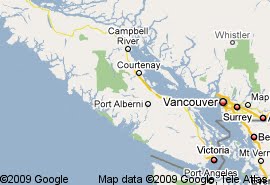The Joy of Trump
Vancouver Island Eyes on the World
Sunday, August 31, 2014
War Memorial

Over 5000 ice sculptures in Birmingham in memory of WW1 soldiers. Very clever and poignant. #BhamWW1 pic.twitter.com/e8dF8CFP9m
"Meet the Navy"

Women sitting on a torpedo at HMCS Discovery as a part of a "Meet the Navy" movie promotion, 1946 from @VanArchives
Cree Native

Cree Indian - Maple Creek, Saskatchewan, 1903
Cree Indian - Maple Creek, Saskatchewan, 1903
Coal for home delivery
Friday, August 29, 2014
The Army’s New Handgun: A Weapon for Criminals?

A U.S. sailor demonstrates the Beretta M9 to a Chinese solider aboard the USS Mason. ( U.S. Naval Forces Central Command/U.S. Fifth Fleet/Flickr)

"“Advancements in firearms have taken place since the M9 was adopted nearly 30 years ago, and it is our intent to take advantage of these advancements,” a military spokesperson told FoxNews.com on Friday. “The Army is seeking to replace the M9 and M11 pistols with a handgun that is more accurate, ergonomic, reliable and durable than the current pistol.”"
'via Blog this'
The Army’s New Handgun: A Weapon for Criminals? | The Fiscal Times:
California Drought
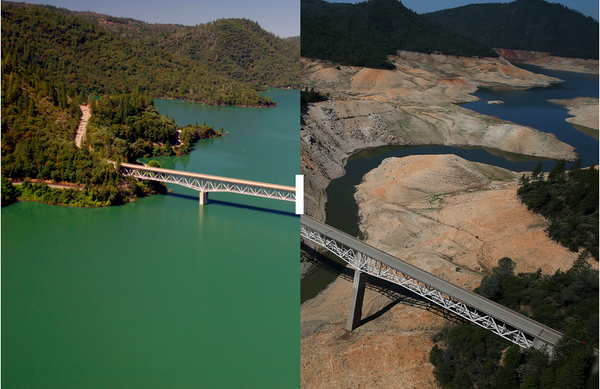
California is currently suffering through its worst drought in at least a century, with 82 percent of the state facing "extreme" or "exceptional" drought. The before-and-after photos below offer a visual look at just how staggering the change has been.
Justin Sullivan, a photographer at Getty Images, recently took a number of aerial shots of California's Lake Oroville, the state's second-largest reservoir and a popular fishing and recreational site. He then compared them with similar images from 2011 taken by Paul Hames of the California Department of Water Resources.
Three years ago, in 2011, the lake was relatively flush with water. Today, the lake is at just 32 percent capacity (when full, it can hold 3.5 million acre feet of water). Run the slider over each picture to see the dramatic change:
Wednesday, August 27, 2014
Paul Ehrlich - Avoiding a collapse of civilisation: Our chances, prospects and pathways forward...
Published on Jul 31, 2013
Paul Ehrlich - Avoiding a collapse of civilisation: Our chances, prospects and pathways forward
A special event presented by the Environment Institute at the University of Adelaide and the Fenner School of Environment & Society at the Australian National University. Environmental problems have contributed to numerous collapses of civilizations in the past.
Now, for the first time, a global collapse appears possible and at the same time avoidable. Population growth supercharged by significantly increasing consumption interacting with our choices of technologies are major drivers. Dramatic cultural change provides the main hope of averting calamity.
Paul and Anne Ehrlich have written a paper on how humanity's global civilisation is threatened with collapse by an array of environmental problems.
In this special presentation, Professor Ehrlich gives a talk about his recent conclusions.
Professor Ehrlich is then be joined by leading ecological scientists to participate in an in-depth panel discussion.
The panel includes Professor Corey Bradshaw from the Environment Institute, Professor David Lindenmayer from ANU, and Professor Graham Pyke from University of Technology Sydney. Professor Stephen Dovers, Director of the Fenner School of Environment chairs the panel session.
Paul Ehrlich is the Bing Professor of Population Studies in the department of Biological Sciences at Stanford University, president of Stanford's Center for Conservation Biology and Adjunct Professor, University of Technology, Sydney. By training he is an entomologist specializing in Lepidoptera (butterflies), but he is also a prominent ecologist and demographer.
Ehrlich is best known for his dire warnings about population growth and limited resources. He became well-known after publication
Now, for the first time, a global collapse appears possible and at the same time avoidable. Population growth supercharged by significantly increasing consumption interacting with our choices of technologies are major drivers. Dramatic cultural change provides the main hope of averting calamity.
Paul and Anne Ehrlich have written a paper on how humanity's global civilisation is threatened with collapse by an array of environmental problems.
In this special presentation, Professor Ehrlich gives a talk about his recent conclusions.
Professor Ehrlich is then be joined by leading ecological scientists to participate in an in-depth panel discussion.
The panel includes Professor Corey Bradshaw from the Environment Institute, Professor David Lindenmayer from ANU, and Professor Graham Pyke from University of Technology Sydney. Professor Stephen Dovers, Director of the Fenner School of Environment chairs the panel session.
Paul Ehrlich is the Bing Professor of Population Studies in the department of Biological Sciences at Stanford University, president of Stanford's Center for Conservation Biology and Adjunct Professor, University of Technology, Sydney. By training he is an entomologist specializing in Lepidoptera (butterflies), but he is also a prominent ecologist and demographer.
Ehrlich is best known for his dire warnings about population growth and limited resources. He became well-known after publication
Category
License
- Standard YouTube License
Lester Brown - Perspectives on Limits to Growth: World on the Edge
Published on Mar 15, 2012
We are facing issues of near-overwhelming complexity and unprecedented urgency. Can we think systematically and fashion policies accordingly? Can we move fast enough to avoid
environmental decline and economic collapse? Can we change direction before we go over the edge? I will look at the economic future through and environmental lens to fashion a plan that
will sustain civilization. The plan has four components: a massive cut in global carbon emissions of 80 percent by 2020; the stabilization of world population at no more than 8 billion by 2040;
the eradication of poverty; and the restoration of forests, soils, aquifers, and fisheries.
environmental decline and economic collapse? Can we change direction before we go over the edge? I will look at the economic future through and environmental lens to fashion a plan that
will sustain civilization. The plan has four components: a massive cut in global carbon emissions of 80 percent by 2020; the stabilization of world population at no more than 8 billion by 2040;
the eradication of poverty; and the restoration of forests, soils, aquifers, and fisheries.
Paul Ehrlich - Population, Environment, and the Millennium Alliance for for Humanity and the Biosphere
Uploaded on Nov 3, 2011
As our population passes the 7 Billion mark Prof Paul Ehrlich warns against the "myths" of limitless population and economic growth.
In this 2011 Jack Beale Lecture Professor Paul Ehrlich focuses on four basic points.
First that Homo sapiens is a small group animal, genetically and culturally attuned to existing with 50-150 other people, now trying to live in a group of seven billion.
Secondly that the planet is vastly overpopulated, possibly as much as four times the long term carrying capacity.
Thirdly his belief that one of the most dangerous myths to infect civilisation is that population and economic growth have no limits and that this myth is symbolic of the failure of education systems and the mass media; and
finally the idea that incremental change will save us is comforting but dangerous.
UNSW 7 Billion website:
Category - Education
License - Standard YouTube License
Tuesday, August 26, 2014
Partnership to Save the Elephants - 2013 CGI Annual Meeting
Published on Oct 7, 2013
Secretary Hillary Rodham Clinton and Chelsea Clinton announce the commitment Partnership to Save the Elephants at the 2013 CGI Annual Meeting. They were joined on stage by participating heads of state and leaders of groups partnering on the effort.
Category
Nonprofits & Activism
License
Standard YouTube License
Wild and Woolly, An Elephant and his Sheep (Full documentary)
Published on Jul 5, 2013
This is an extraordinary tale of an amazing friendship between a baby elephant, a sheep and a handful of people at Shamwari Rehabilitation Centre. Themba, the baby elephant, lost his mother after she fell down a cliff. The team at the Shamwari Rehabilitation Centre rescued him and for two years they dedicated their lives to getting this very special orphan back to the wild.
Themba befriended a very patient sheep named Albert, and together they formed a bond as strong as any human friendship. Albert never left Themba's side and would follow Themba and his carers on long walks; share in Themba's favourite snack of acacia pods; and when Themba took a dust bath, so did Albert. If any of the other animals at the Rehabilitation Centre tried to join in their fun and games, super protective Albert would make it quite clear that they were most unwelcome. The unlikely pair made friends with a baby giraffe, and enemies with a baby hippo. There was never a dull moment when Themba and Albert were around!
Category
People & Blogs
License
Standard YouTube License
Save the Elephant song "Standing as one"
Published on Oct 14, 2012
A music video tribute to The African Elephant.
Video from Mkaya Game reserve, and Kruger National Park.
Pictures from Kariega game reserve, and The Sheldrick Wildlife Trust.
Lead vocal and chorus tracks each recorded in one take
Lyrics:
Here comes the African sun
Here comes the African sun
Magic mirror on the wall please
Tell me what is my fate
Will I walk in the morning
Give me peace give me space
Take your guns I say...
And leave me alone
Leave my sacred land...
Its my African home
Its my African home
And were not alone
Here comes the African Sun
Here are the daughters and sons
And we will stand as one
Together were strong
Standing as one
Were standing as one
You can try and break me
But you know its in vain
Course I will come out victoriously
And you have nothing to gain
Spirits of Africa...
Dont let them stay
Leave my sacred lands...
And go away.
Were gonna take it no more
Were gonna take it no more
Here comes the African Sun
Here are the daughters and sons
And we will stand as one
Together were strong
Standing as one
Were standing as one
Here comes the African sun
Here comes the African sun
Video from Mkaya Game reserve, and Kruger National Park.
Pictures from Kariega game reserve, and The Sheldrick Wildlife Trust.
Lead vocal and chorus tracks each recorded in one take
Lyrics:
Here comes the African sun
Here comes the African sun
Magic mirror on the wall please
Tell me what is my fate
Will I walk in the morning
Give me peace give me space
Take your guns I say...
And leave me alone
Leave my sacred land...
Its my African home
Its my African home
And were not alone
Here comes the African Sun
Here are the daughters and sons
And we will stand as one
Together were strong
Standing as one
Were standing as one
You can try and break me
But you know its in vain
Course I will come out victoriously
And you have nothing to gain
Spirits of Africa...
Dont let them stay
Leave my sacred lands...
And go away.
Were gonna take it no more
Were gonna take it no more
Here comes the African Sun
Here are the daughters and sons
And we will stand as one
Together were strong
Standing as one
Were standing as one
Here comes the African sun
Here comes the African sun
Dr. Iain Douglas-Hamilton, Founder of "Save the Elephants"
Published on Jun 7, 2012
"One man's mission to fight elephant poaching
=================================
=================================
Africa is experiencing a severe poaching crisis of the order we have not seen since the 1970s. One man is leading the fight to save the elephants through technology, collaboration, and community engagement.
This man is Dr. Iain Douglas-Hamilton. His groundbreaking study of elephant behavior in Tanzania in the 1960's paved the way for elephant research and conservation today. Intrigued by their intelligence, Iain became passionate about elephant protection and founded "Save the Elephants" in 1993.
Today, Iain is a leader in using technology for conservation. He has outfitted GPS collars on eighty wild elephants, enabling researchers to watch live elephant movements through Google Earth, an experience similar to flying across the Kenyan bush from 500 feet in the air. He has been named a Google Earth hero for his innovative use of Google Earth in conservation.
Through Android phones, Iain collects GPS location data and photos about elephant deaths. He then shares the data as indisputable evidence with advocacy bodies tracking elephant poaching trends. He also does his part to save the environment while saving the elephants. His project is powered entirely by solar panels.
Googlers interested in watching elephants in Kenya are welcome to stay at the Elephant Watch Camp, run by Dr. Iain Douglas-Hamilton's wife Oria.
About the Speaker: Dr. Iain Douglas-Hamilton
==================================
Iain founded Save the Elephants in 1993, involving local people in both conservation efforts and research. Iain received his Ph.D. in Zoology from the University of Oxford in England. He was honored with the Netherlands' prestigious Order of the Golden Ark conservation award, and was inducted into the Order of the British Empire in 1993. Iain is respected as one of the world's principal authorities on the African elephant.
Acknowledgements
==============
Video animation of Mountain Bull's movements were created by Jake Wall of Save the Elephants using ESRI Chronological Analyst for ArcMap
v.9.2.
Winnie Lam was the host for this talk."
Category
License
- Standard YouTube License
Elephant poaching is still rampant
CBC News @CBCNews
Why elephant poaching is still rampant
http://cbc.sh/4Ek0y3L
pic.twitter.com/v4loAFgb3s
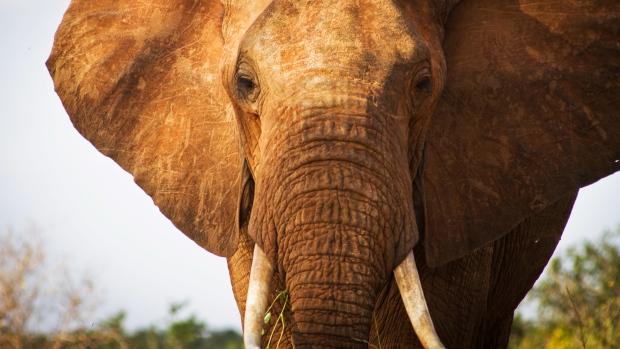

 African Elephant herd at water hole, Kruger National Park
African Elephant herd at water hole, Kruger National Park
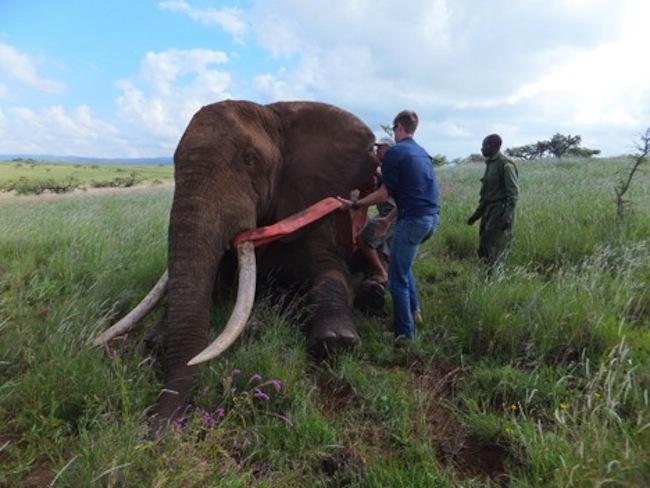
Africa's elephants are in more trouble than we thought.
THE AFRICAN ELEPHANT POPULATION WAS DECLINING BY 2% TO 3% PER YEAR
The illegal poaching of elephants for their ivory tusks has soared dramatically in recent years, with some100,000 African elephants killed between 2010 and 2012, according to new estimates published in theProceedings of the National Academies of Sciences.
During that period, researchers calculate that poachers were killing elephants much faster than new elephants were being born, and the overall population was likely declining between 2 percent to 3 percent per year.
If that pace were to continue, African elephants will eventually go extinct — and early estimates suggest the pace of poaching has stayed unsustainable through 2013.
Up until now, numbers on elephant poaching were fairly speculative. This new paper, led by George Wittemyer of Colorado State University, is the most detailed picture yet.
The researchers combined intensive study of wild populations in the Samburu region of Kenya with carcass data collected across the continent to make more precise estimates.
Demand in China is driving a rise in poaching
/cdn3.vox-cdn.com/uploads/chorus_asset/file/663566/175724989.0.jpg) Ivory tusks seized by Hong Kong customs officials are displayed during a press conference on August 7, 2013 in Hong Kong. (Lam Yik Fei/Getty Images)
Ivory tusks seized by Hong Kong customs officials are displayed during a press conference on August 7, 2013 in Hong Kong. (Lam Yik Fei/Getty Images)
Among other things, the paper confirms that there was a massive surge in African elephant kills starting in 2008 or so.
A KILOGRAM OF IVORY CAN NOW FETCH UP TO $7,000 IN CHINA
Why the jump? Rising demand from China likely plays a major role.
A kilogram of ivory can now fetch as much as $7,000
in China, where it's used for ornaments or ground up for use in traditional medicine.
The researchers found that the 2009 surge in illegal killings directly correlated with a jump in black-market ivory prices as well as a surge in seized trafficked ivory shipments destined for China.
That also happened to be the first year that China's legal internal ivory markets began booming.
What's more, elephant deaths in Africa seem to correlate with key variables for Chinese household consumption.
"[This] suggests reduction of demand for illegal ivory in China should be a priority," the researchers conclude.
The study also implies that some previous interventions may prove promising. For instance, 2011 was the worst year for elephant poaching — with some 40,000 elephants killed, or roughly 8 percent of the population.
But, at the end of the year, China cracked down on domestic ivory auctions, and poaching declined the following year. That doesn't prove the crackdown worked, but it's certainly suggestive.
What about other measures?
At the end of 2013, various countries in Africa and Asia attended an elephant conservation summit in Botswana, in which they committed to 14 "urgent measures" — from increasing penalties against ivory poaching and trafficking, to boosting wildlife protection agencies, to raising awareness about the importance of elephants.
(The United States, for its part, has been publicly destroying confiscated ivory shipments, although some economists have argued that this is counterproductive by raising prices.) We still don't know for sure if any of these measures are having an impact this year.
Some countries are better at conservation than others
(Wittemyer et al, 2014)
The researchers note that conservation efforts and enforcement are also critical to protecting Africa's elephants. And as the map above shows, that varies from country to country.
Namibia, for instance, has invested a fair amount in elephant conservation and protection programs (aided by a tourism boom) — and wild populations are growing there. By contrast, elephant populations are declining sharply in places like the Democratic Republic of Congo.
"It is obvious that stemming the rate of illegal killing is paramount," the researchers conclude.
"Heavy in situ conservation efforts have been shown to stem illegal harvesting and, therefore, need to be enhanced in the face of the current [poaching] rates. …
[C]urbing demand — particularly in the Far East — appears necessary to reduce black market ivory prices and alleviate the unsustainable pressure from illegal killing on wild populations."
Further reading: A Wikileaks-style website could help cut down on poaching.
Source: http://www.cbc.ca/news/technology/google-elephant-system-made-by-b-c-man-helps-fight-poaching-1.2709745
pic.twitter.com/v4loAFgb3s


 African Elephant herd at water hole, Kruger National Park
African Elephant herd at water hole, Kruger National Park
ELEPHANTS: Google earth enabled GPS collars helps fight poaching @ste_kenya http://www.cbc.ca/1.2709745
pic.twitter.com/pdESJRXRjSAfrica's elephants are in more trouble than we thought.
THE AFRICAN ELEPHANT POPULATION WAS DECLINING BY 2% TO 3% PER YEAR
The illegal poaching of elephants for their ivory tusks has soared dramatically in recent years, with some100,000 African elephants killed between 2010 and 2012, according to new estimates published in theProceedings of the National Academies of Sciences.
During that period, researchers calculate that poachers were killing elephants much faster than new elephants were being born, and the overall population was likely declining between 2 percent to 3 percent per year.
If that pace were to continue, African elephants will eventually go extinct — and early estimates suggest the pace of poaching has stayed unsustainable through 2013.
Up until now, numbers on elephant poaching were fairly speculative. This new paper, led by George Wittemyer of Colorado State University, is the most detailed picture yet.
The researchers combined intensive study of wild populations in the Samburu region of Kenya with carcass data collected across the continent to make more precise estimates.
Demand in China is driving a rise in poaching
/cdn3.vox-cdn.com/uploads/chorus_asset/file/663566/175724989.0.jpg)
Among other things, the paper confirms that there was a massive surge in African elephant kills starting in 2008 or so.
A KILOGRAM OF IVORY CAN NOW FETCH UP TO $7,000 IN CHINA
Why the jump? Rising demand from China likely plays a major role.
A kilogram of ivory can now fetch as much as $7,000
in China, where it's used for ornaments or ground up for use in traditional medicine.
The researchers found that the 2009 surge in illegal killings directly correlated with a jump in black-market ivory prices as well as a surge in seized trafficked ivory shipments destined for China.
That also happened to be the first year that China's legal internal ivory markets began booming.
What's more, elephant deaths in Africa seem to correlate with key variables for Chinese household consumption.
"[This] suggests reduction of demand for illegal ivory in China should be a priority," the researchers conclude.
The study also implies that some previous interventions may prove promising. For instance, 2011 was the worst year for elephant poaching — with some 40,000 elephants killed, or roughly 8 percent of the population.
But, at the end of the year, China cracked down on domestic ivory auctions, and poaching declined the following year. That doesn't prove the crackdown worked, but it's certainly suggestive.
What about other measures?
At the end of 2013, various countries in Africa and Asia attended an elephant conservation summit in Botswana, in which they committed to 14 "urgent measures" — from increasing penalties against ivory poaching and trafficking, to boosting wildlife protection agencies, to raising awareness about the importance of elephants.
(The United States, for its part, has been publicly destroying confiscated ivory shipments, although some economists have argued that this is counterproductive by raising prices.) We still don't know for sure if any of these measures are having an impact this year.
Some countries are better at conservation than others
The map below shows where Africa's elephant population is growing (in green) and shrinking (in yellow and red). The forest elephants of Central Africa have seen the biggest decline:/cdn1.vox-cdn.com/uploads/chorus_asset/file/663496/elephant_population_in_africa.0.png)
/cdn1.vox-cdn.com/uploads/chorus_asset/file/663496/elephant_population_in_africa.0.png)
(Wittemyer et al, 2014)
The researchers note that conservation efforts and enforcement are also critical to protecting Africa's elephants. And as the map above shows, that varies from country to country.
Namibia, for instance, has invested a fair amount in elephant conservation and protection programs (aided by a tourism boom) — and wild populations are growing there. By contrast, elephant populations are declining sharply in places like the Democratic Republic of Congo.
"It is obvious that stemming the rate of illegal killing is paramount," the researchers conclude.
"Heavy in situ conservation efforts have been shown to stem illegal harvesting and, therefore, need to be enhanced in the face of the current [poaching] rates. …
[C]urbing demand — particularly in the Far East — appears necessary to reduce black market ivory prices and alleviate the unsustainable pressure from illegal killing on wild populations."
Further reading: A Wikileaks-style website could help cut down on poaching.
Source: http://www.cbc.ca/news/technology/google-elephant-system-made-by-b-c-man-helps-fight-poaching-1.2709745
Birds and Butterflies
The Grayling Butterfly - master of camouflage... except when its not camouflaged! More info http://www.britishbutterflies.co.uk/species-info.asp?vernacular=Grayling …
pic.twitter.com/jHVVWjyoZ
 British Butterflies @britbutterflies
British Butterflies @britbutterfliesRetweeted by Global Naturalist
China Xinhua News @XHNews · Aug 17
Young red-crowned crane fluttering wings in Zhalong Natural Reserve in NE China's Qiqihar
pic.twitter.com/Z5dFztQ87J
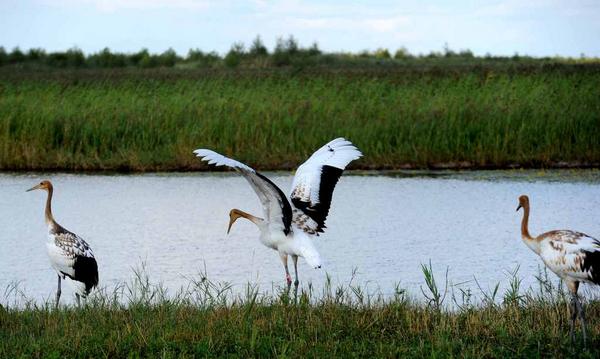
China Xinhua NewsVerified account@XHNews
Young red-crowned crane fluttering wings in Zhalong Natural Reserve in NE China's Qiqihar pic.twitter.com/Z5dFztQ87J
Blonde raccoons remain elusive on Newcastle Island
NEWS
Blonde raccoons remain elusive on Newcastle Island

Nanaimo resident Rabina Phipps captured a photo of the elusive blonde raccoon earlier this summer on Newcastle Island. She has been trying to catch sight of the animals for more than two decades.
— Image Credit: RABINA PHIPPS Photo
"Blonde raccoons remain elusive on Newcastle Island Nanaimo resident Rabina Phipps captured a photo of the elusive blonde raccoon earlier this summer on Newcastle Island. She has been trying to catch sight of the animals for more than two decades.— Image Credit: RABINA PHIPPS Photo 1 by Tamara Cunningham - Nanaimo News Bulletin posted Aug 26, 2014 at 10:00 AM It’s not as well-known or revered as British Columbia’s spirit bear, but Nanaimo has its own animal attraction. Newcastle Island is one of the only places in B.C. known to have blonde raccoons, a colour believed to be caused by a double-recessive gene. It’s an “interesting phenomenon,” according to Sean Pendergast, wildlife biologist with the B.C. Ministry of Forests, Land and Natural Resource Operations, who said he’s also heard of people spotting white moose, deer and squirrels in different parts of the country. Even B.C.’s white spirit bear is a colour-phase of the black bear. It’s not known how many of the blonde raccoons are on Newcastle, but Pendergast said it’s the only place in the West Coast region he’s heard of them being reported. If the raccoons did exist elsewhere in B.C. it would likely be at very low levels, he said, adding it’s not something the province keeps tabs on. The colour could put the animal at a natural disadvantage in areas where there’s more predators, Pendergast said. “To my knowledge it’s not overly common, but there have been reports for some time now or many years on Newcastle Island of seeing these blonde colour-phase racoons,” he said. “You need this isolated population with [a] low level of gene influx to allow the recessive trait to come out.” Field naturalist Bill Merilees, a member of the Newcastle Island Society, has spotted the creatures over the years and calls it a “cool phenomenon.” Sightings take timing and a little luck, but the blonde raccoons are on the beach regularly, he said, adding the chances of seeing one on the island is better than anywhere else he knows of in the province. Luck was on the side of Nanaimo’s Rabina Phipps this summer. The paddler was out on the water with friends when she saw a white speck on Newcastle Island. She and her husband, a Nanaimo native, have been trying to catch sight of a blonde raccoon for more than two decades with no success. “I knew [it] was there, but we’ve never found it or seen it,” she said, adding she was beside herself when she caught sight of one. “I said there it is! There it is! I was pulling out the camera and I had camera parts flying all over the place and the boat was drifting and I was yelling at the girls to hold the boat.” Phipps has seen one of the colour-phase racoons several times now, which she says we’re special to have. The animals are listed as one of Newcastle Island’s attractions on the trail guide and according to Merilees the best time to find one is in the morning during low tide, when raccoons come out to forage."

Spirit Bear
In a moss-draped rain forest in British Columbia, towering red cedars live a thousand years, and black bears are born with white fur.
Link: http://www.nanaimobulletin.com/news/
http://ngm.nationalgeographic.com/2011/08/kermode-bear/barcott-text
Blonde raccoons remain elusive on Newcastle Island - Nanaimo News Bulletin:
'via Blog this'
Saturday, August 23, 2014
Simplify Your Digital World
You're a small-business owner, or maybe a serial entrepreneur. And, I'm guessing, you don't have a lot of time on your hands because you wear too many hats and juggle too many tasks.
In order to be really successful, you have to be efficient. Your mind should be free of mundane tasks and dedicated to creativity, innovation, and execution.
The three areas in which I spend the vast majority of my day are communicating, reading and looking for information.
If you're anything like me, you're over-connected and inundated with information. Streamlining the management of information is the key to efficiency.
Below are three tools I use to help manage the fire hose of digital information and not become overwhelmed."
1. Boomerang for scheduling emails.
If you are well-versed in email marketing, you know that there is an optimal time to send an email, depending on who is getting it. In order to ensure your email is actually read, you need to send it when the recipient is most likely to read it.
I'm doing a disservice to my team when I send an email late in the evening to have something taken care of the next day. I'm sending it to get it off of my mind and to-do list, but in doing so, I create a problem. First, if unread that evening, it's likely to be buried in emails the following morning, and possibly overlooked. Second, if it is read, I'm unnecessarily driving up my employee's anxiety level with an email from the boss at night.
The solution is to crank out the email, and then queue it up with Boomerang to send first thing in the morning. I no longer have to remember to send the email in the morning, have less concern that the email will be buried in the employee's inbox, and don't ruin anyone's evening with an email request from the boss.
2. Pocket to stay organized.
At least 95 percent of my news and daily information consumption is online. I live and breathe a digital life, and yet, I have a serious challenge keeping up with the overflow of content. Every morning and evening, I go through my queue of content in Flipboard, Feedly, and Zite. Each article fits into one of three levels of valuation for me.
I read the headline, and if it's written well, even though I don't have an interest in the piece, I'll have enough information to acknowledge in conversation that I am aware of the topic. It's like knowing your baseball team won last night, but having no clue who had the game-winning hit. If my interest is piqued, I scan or read the article for more details.
Third, and most valuable, is an article I need to commit to memory. Unfortunately, my brain has limited capacity, so like the days of clipping newspaper articles, I need to store the piece for future retrieval. For this, I use Pocket, which is part personal archive, part digital memory and extremely effective. My content is tagged with terms like "infosec," "leadership," or "media trends" and simple keyword searches allow me to refer back to my digital memory without having to recall specific details.
3. CloudMagic to find and retrieve information.
If you don't work for one of the five million organizations currently using Google Apps, then you're without the inbox search capabilities of Gmail. Too many people use their inboxes as catch-all storage repositories, only to find the search and retrieval process cumbersome, if not impossible. How frustrating is it knowing that you stored some digital notes about a client meeting, but you have no idea where. With CloudMagic, you have one interface to search through all of your personal data repositories like Gmail, Outlook, Evernote, Dropbox, Aol, and more.
Let me add one caveat. If you're one who worries about your digital privacy, this service might not be for you. Make sure you read and are comfortable with their privacy policy before proceeding.
The amount of information created will continue to grow exponentially. Without tools and technologies helping you cut through the digital noise, you will damage your ability to innovate and grow your business.
Don't let yourself to get bogged down.
Organize and improve the structure of your digital communications with these three tools.
'via Blog this'
3 Tools to Simplify Your Digital World | Entrepreneur.com: "
http://www.entrepreneur.com/article/228684
Tales of the Gun - Episode 8: Guns of Winchester (History Documentary)
Published on Feb 10, 2014
Tales of the Gun - Episode 8: Guns of Winchester (History Documentary)
Throughout history, few items have changed the face of the world as completely as the firearm. Present in virtually every conflict - large and small - since its invention, the gun has impacted mankind's conflicts for centuries. Take a closer look at the history, development and mechanics of the gun
EPISODE 8: Guns of Winchester
The man behind one of the most famous guns in history started his career as a shirt maker!
It is one of the most famous names in the history of weapons. Like Colt, Remington, and Kalashnikov, the guns produced by Winchester helped shape the world we know today.
Strange as it may seem, Oliver Winchester started his career as a shirt maker, not a weapons manufacturer. But the former tailor ended up creating the legendary lever-action rifle that helped tame the Old West and was among the most sought-after weapons in the Civil War. GUNS OF WINCHESTER tells how Oliver got into the weapons business and details the innovations that made the gun that bore his name so popular. Extensive period photos and artifacts help chronicle its important role in America's westward expansion and the Civil War, while collectors show off the vintage guns that now command up to $100,000.
Filled with interviews with the world's leading experts, this is a comprehensive chronicle of one of the most important weapons ever made.
Category
Education
License - Standard YouTube License
Thursday, August 21, 2014
The last oil-paper umbrella craftsman in SW China
Published on Aug 21, 2014
Today on China View, we' ll take you to a village in southwest China' s Guangxi Zhuang Autonomous Region to meet one of the last living oil-paper umbrella craftsmen. The form of art has been in his family for generations.
Contrasting Lives
 China Xinhua News @XHNews · Artist works on sand sculpture at International Sand Sculpting Competition in Toronto
China Xinhua News @XHNews · Artist works on sand sculpture at International Sand Sculpting Competition in Toronto
Nine traders arrested as police in central China rescue Siberian tiger cub http://xhne.ws/xWPKJ


IME
Shared publicly - Yesterday 3:00 PM
She’s one of the oldest sex therapists in the world.
She says our hectic work lives are killing our sex lives
Subscribe to:
Posts (Atom)
